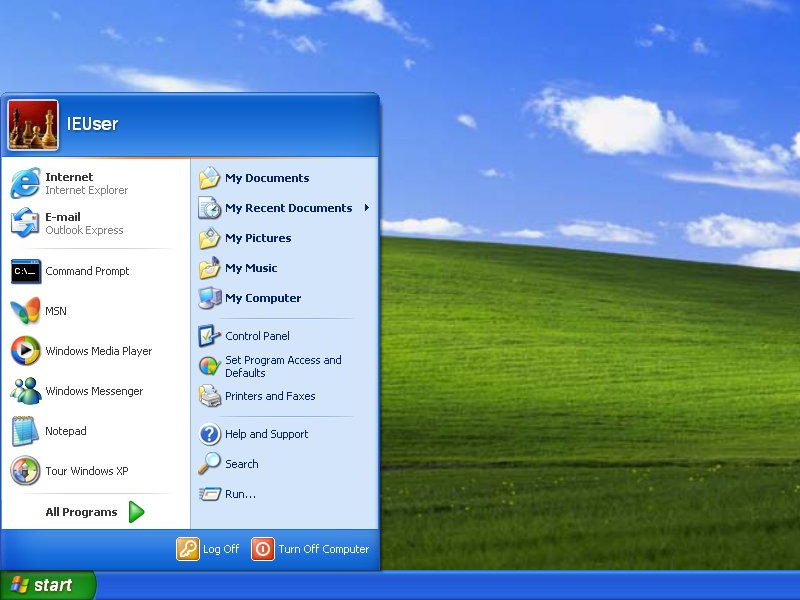

- #Windows xp start menu update
- #Windows xp start menu full
- #Windows xp start menu Pc
- #Windows xp start menu plus
- #Windows xp start menu windows
It lacked the ability to nest groups within other groups. Program Manager consisted of a simple multiple document interface (MDI) which allowed users to open separate "program groups" and then execute the shortcuts to programs contained within. It was made to overcome the shortcomings of Program Manager in previous operating systems.
#Windows xp start menu windows
The Start menu was introduced in Windows 95 and Windows NT 4.0, but had been worked on at Microsoft since 1992, originally being labelled as "System" to testers of the time. Until Windows Vista, the Start menu was constantly expanded across the screen as the user navigated through its cascading sub-menus. Windows XP's Start menu was expanded to encompass various My Documents folders (including My Music and My Pictures), and transplanted other items like My Computer and My Network Places from the Windows desktop.
#Windows xp start menu update
Later enhancements via Windows Desktop Update included access to special folders such as "My Documents" and "Favorites" (browser bookmarks). Traditionally, the Start menu provided a customizable nested list of programs for the user to launch, as well as a list of most recently opened documents, a way to find files and obtain assistance, and access to the system settings. It has been co-opted by some operating systems (like ReactOS) and Linux desktop environments for providing a more Windows-like experience, and as such is for example present in KDE, with the name of Kickoff Application Launcher, and on Xfce with the name of Whisker Menu. It provides a central launching point for computer programs and performing other tasks in the Windows shell. The Start menu is a graphical user interface element used in Microsoft Windows since Windows 95 and in other operating systems. If you are using RegServe you need not worry about this, because the tool automatically backs up the registry before making any changes to it.Graphical user interface element included in Microsoft Windows since Windows 95 However, before you proceed with the clean up, remember to backup the registry. To prevent and fix these issues, you may use a good registry cleaner tool, such as RegServe to thoroughly scan and repair these problem entries. SFC or the System File Checker utility will detect and then try to fix or replace missing or corrupt operating system files.Ĭorrupt entries in the Windows registry may also cause Start Menu problems.
#Windows xp start menu full
Next, use your updated Antispyware tool, such as Spyware Cease to run a full system scan.
#Windows xp start menu plus
Open your updated Antivirus tool, such as AntiVirus Plus and run a full system scan on the PC.On Windows Advanced Options Menu, scroll down and select Safe Mode.
#Windows xp start menu Pc


 0 kommentar(er)
0 kommentar(er)
